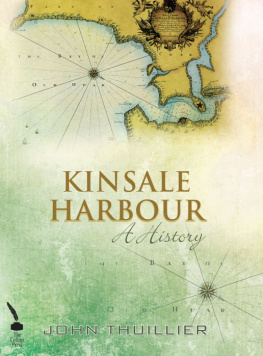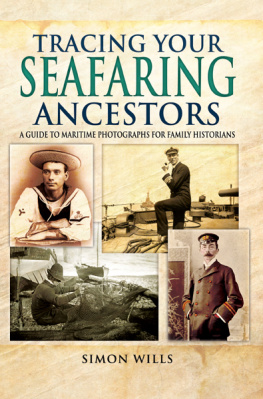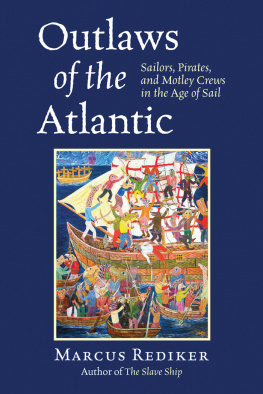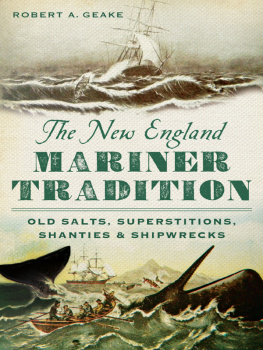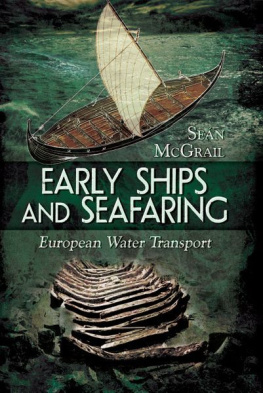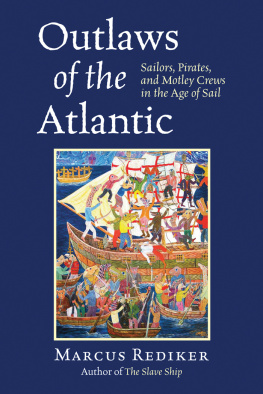Kinsale in the 1950s and 1960s, when I was growing up, was at a low ebb economically. Many young men took the option of going to sea for a livelihood. On their return after long voyages one was treated to stories of sailing the oceans and listening to accounts of escapades ashore in foreign ports. Jack ODriscoll, Charlie Hurley, John Alcock, Gerald Gimblett, Ted Coakley, Tommy Newman, Billy Farren, members of the Kent, Price and Lombard families and others were generous, not just in recounting their own experiences at sea, but drawing on the memories of generations of seafarers who went before them. In any case, the delight of receiving an orange all the way from Australia helped to spark the imagination of the young listener.
My mother, whose family were involved in the fishing industry, provided detailed information on the buyers and auctioneers and records of transporting the catch to Dublin and Liverpool, and to Billingsgate market in London. On my fathers side, the family were boatbuilders, owners and through membership of various boards and public bodies were fully engaged in the affairs of the harbour. Detailed records, memoirs, financial statements and work diaries, which provide first-hand accounts of over 200 years marine activity, were invaluable to me in understanding the reality of seafaring life in Kinsale.
Dan OShea, the late Harbour Master, Bill Deasy and Neddy Ward of the Worlds End, were willing to share their appreciation of the harbour while Francie Dempsey, Jimmy Lawton, Eugene Dennis and Jerome Lordan provided invaluable information on the Old Head of Kinsale. Thanks are also due to Captain Phil Devitt for making the harbour records available to me.
I wish to acknowledge the assistance of the Admiralty Office in London and the National Library of Ireland for permission to reproduce charts and photographs. I am grateful to Mary Hegarty, Kevin Goggin and Buddy Irwin for the use of photographs and Liam Fitzgibbon, Kevin OSullivan, Dermot Collins and the late John H. Thuillier (my grandfather) for providing illustrations and drawings. Particular thanks are due to Tony Bocking for his interest and knowledge of local history and his archive of photographs, which he very generously made available. Appreciation also to Mary Lombard of the Boole Library, University College Cork, for her kindness and assistance.
The professional photographic skills and technical knowledge of John Collins are in evidence in the high quality of the images reproduced in the book. The role and encouragement, from the beginning, of The Collins Press is much appreciated.
My brothers, Maurice who has spent a lifetime in boats and Joe who is a master mariner, have provided advice and critical comment. Son Bill and daughters Maeve and Jane took a keen interest in the project and were constantly available to undertake proofreading and offer assistance in the technical area. I would like to thank the copyright holders for permission to reproduce the photographs, charts and drawings in the book. Every reasonable attempt has been made to trace ownership. The publisher will be happy to hear from any copyright holders not acknowledged and undertakes to rectify any errors or omissions in future editions. Finally as ever, Margaret, my wife, has provided enormous support and encouragement and was always available with advice, love and support.
John R. Thuillier
2014
The story of Kinsale is the history of its connection with the sea. Heartbeat-like, the rhythmic ebb and flow of the tide sustains the town. For centuries the impact of the maritime environment has influenced structure and settlement patterns, as it responded to the seaborne traffic that entered the harbour. The Irish name for Kinsale says it all, Ceann tSile , the head of the sea. The towns fortunes over the centuries waxed and waned in response to the possibilities and potential present in its marine setting. The harbour became a focus for drifters, trawlers and hookers attracted to fish the large shoals off the coast. For centuries Kinsale was also an important hub for shipping. No method of transport could compete with the efficiency of ships capable of bearing thousands of tons of cargo over great distances. While dependent on wind and constrained by weather and tide, the sea provided the means by which communication and commercial links were established. Tall ships, square sailed to fore-and-aft rig, filled the harbour, heralding the desire for discovery and colonisation in lands beyond the horizon.
The deep water of the harbour situated on the estuary at the mouth of the Bandon River gave access to shipping at all stages of the tide and provided rest and shelter for many tired and storm-buffeted sailors. Schooners, smacks, brigs and barquentines, pitching and rolling as they came through the robust tidal race off the Old Head of Kinsale, prepared for the final approach to the harbour mouth. Giving Bream Rock a wide berth in the prevailing breeze, the incoming vessels yielded to fluky squalls from the cliffs of the tall promontory and, steering on a course a few degrees east of north, headed for the entrance. Ships arriving from the south-east, the Isles of Scilly or Cornwall picked up the light on the Old Head 30 miles out. Vessels from Bristol on a bearing due west of the Smalls Rocks off the Welsh coast approached Kinsale leaving the Sovereign Islands to starboard. The 1703 ships log of the vessel on which Alexander Selkirk was sailing master, and on whom Daniel Defoe based his novel Robinson Crusoe , describes them as very foul. Closing in on the entrance, sheets are checked as the vessel, yawing in the breaking crests, surges forward. Slowing in the trough, with helm down to counter the broach, the ship awaits the next wave coming up under the stern.
Even for the modern yachtsman approaching the entrance, there is little to compare with the sight of a gleaming smooth wake in a sparkling breeze, as the Sovereign Islands close on Frower Point and vessels enter the embracing shelter of the harbour. Passing Preghane and Eastern Points to starboard and Money Point on the western side, relieved crews with bronzed faces, whitened with drying salt from the spray, relax under the bracken-covered cliff.
Where no storm comes,
Where the green swell is in the havens dumb
And out of the swing of the sea.
Gerald Manley Hopkins (Heaven-Haven) .
Shelter was just one of the factors which attracted maritime activity to Kinsale. In 1666 it was described by the Earl of Orrery as one of the noblest harbours in Europe. There are numerous references to the harbour teeming with ships and at least to the middle of the eighteenth century its importance was such that it was described as being in the roads of the commerce of the world. Kinsale had the depth of water to take ships of up to 1,000 tons, which were the ocean-going vessels of the day. In the fairway, extending from the mouth of the harbour to Murphys (Ringfinnan) Point, on the Bandon River, anchorage is available to a depth of two fathoms.
The port is located on a series of bends in the lower reaches of the river which, through erosion and river capture, form three linked harbours making Kinsale one of the most secure anchorages on the coast. The Old Head of Kinsale promontory, stretching 5 miles into the open sea, is a natural breakwater giving the harbour mouth protection from the prevailing south-westerly winds. The prominent headland with its lighthouse is also the ideal landfall for incoming ships.
At the time when vessels were dependent on wind as the only source of power, proximity to the open sea was important, which from the anchorage at Kinsale is approximately one nautical mile. In calm conditions it is possible to drift on an ebb tide to pick up a breeze outside the harbour. The prevailing winds generally give beam-reaching conditions for quick passages to Britain, France and Spain. Regularly voyages to Ushant, off the Brittany coast, were made in two days and in suitable conditions a trip to Bristol, Kinsales contact port in Britain, could be sailed in under thirty hours.
Next page
